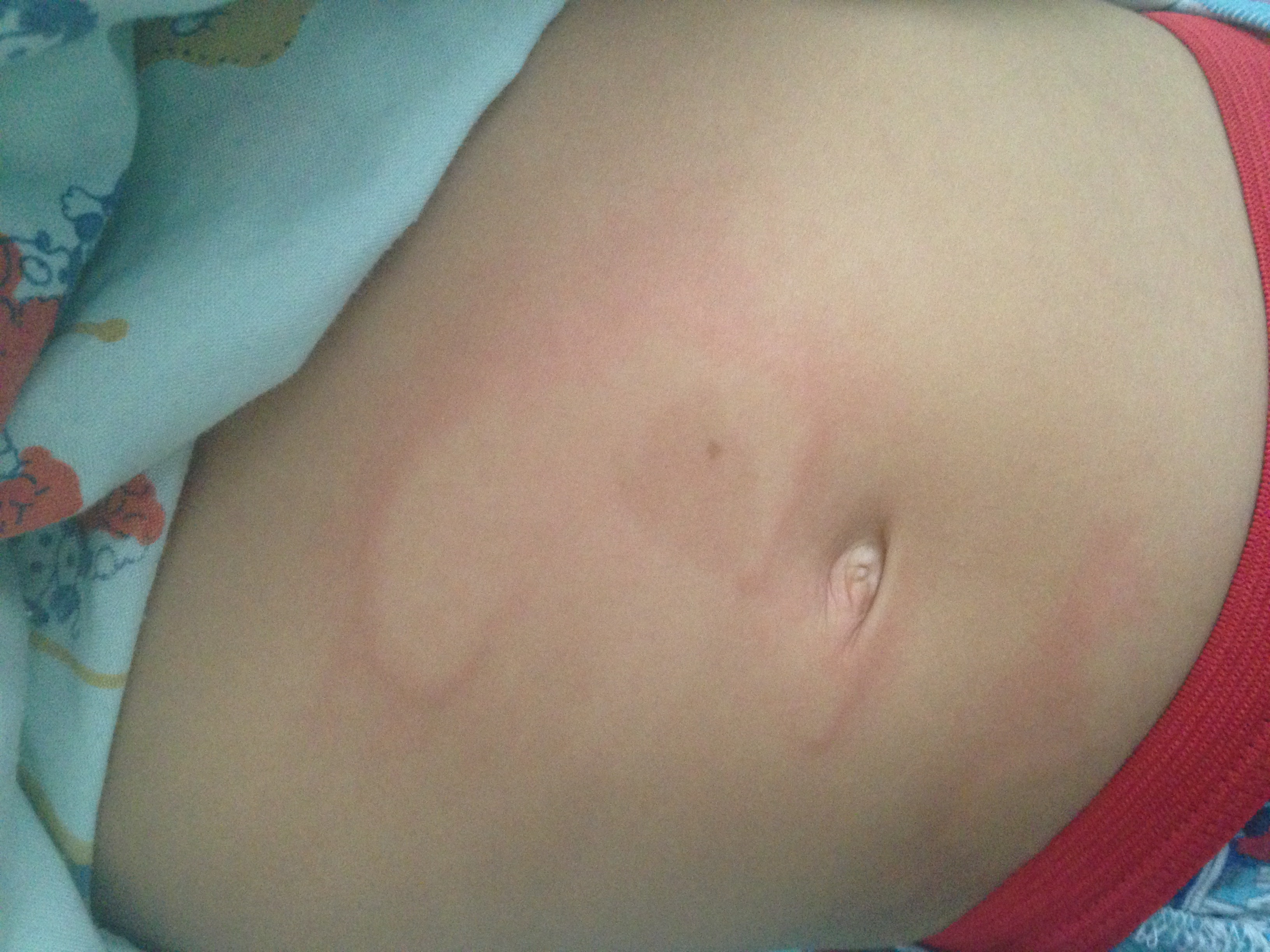Case Presentation: A previously healthy 5 year-old boy presented to the emergency room with a “red and swollen penis”. No history of trauma or inciting event. The day prior, he complained of suprapubic pain and had 4 episodes of NBNB emesis. No fevers and otherwise negative ROS. Labs in the ED were significant for a leukocytosis (WBC of 18,200 with 78% neutrophils) and UA with 1+ protein. He was diagnosed with a “penile infection” and sent home on cephalexin.The next day he returned to the ED (after 2 doses of cephalexin) with achiness, periorbital and acral edema, a hive-like rash on his trunk and extremities, and difficulty walking secondary to pain. Prior penile edema and erythema had resolved. Labs were significant for resolution of leukocytosis, normal CMP, normal CK; UA without protein. He was admitted for further evaluation and management.
Diphenhydramine and ranitidine were given for his rash and scheduled ibuprofen helped with his pain, which was likely secondary to the edema. Acral and periorbital edema improved significantly over the next 24 hours while on antihistamines; however the rash was progressive and evolving. Each lesion followed a consistent pattern that began with small raised lesion that looked similar to a bug bite, then progressed to a classic urticarial lesion, before it expanded and developed central clearing with a raised perimeter. Given this pattern as well as his improvement on antihistamines, his presentation was most consistent with Acute Annular Urticarial Hypersensitivity or “Urticaria Multiforme”.
Discussion: The initial presentation of penile edema and erythema is rare. The development of acral edema with a characteristic annular, arcuate, polycyclic urticarial lesions is consistent with Acute Annular Urticaria. It is a cutaneous cytotoxic hypersensitivity reaction mainly mediated by histamine. Patients often have a history of a recent viral or bacterial infection or antibiotic use. In this case, the inciting event most likely was a viral illness. Symptoms are usually self-limited with individual lesions lasting less than 24 hours. The penile symptoms in this case were likely related to a self-resolving urticarial lesion. Total duration of rash is usually 8-10 days. Importantly, children are non-toxic in appearance. The rash is often misdiagnosed as erythema multiforme or serum-sickness.
Conclusions: When confronted with an evolving rash that may initially be challenging to define, it is important to consider the time course and associated symptoms. In this case, the patient was uncomfortable with pain and edema, however he was afebrile and nontoxic. It can be difficult to wait for an illness to evolve, however jumping to conclusions too early or initiating inappropriate medical treatment can be detrimental as well. Supportive care with antihistamines and NSAIDs was appropriate management in this case.

